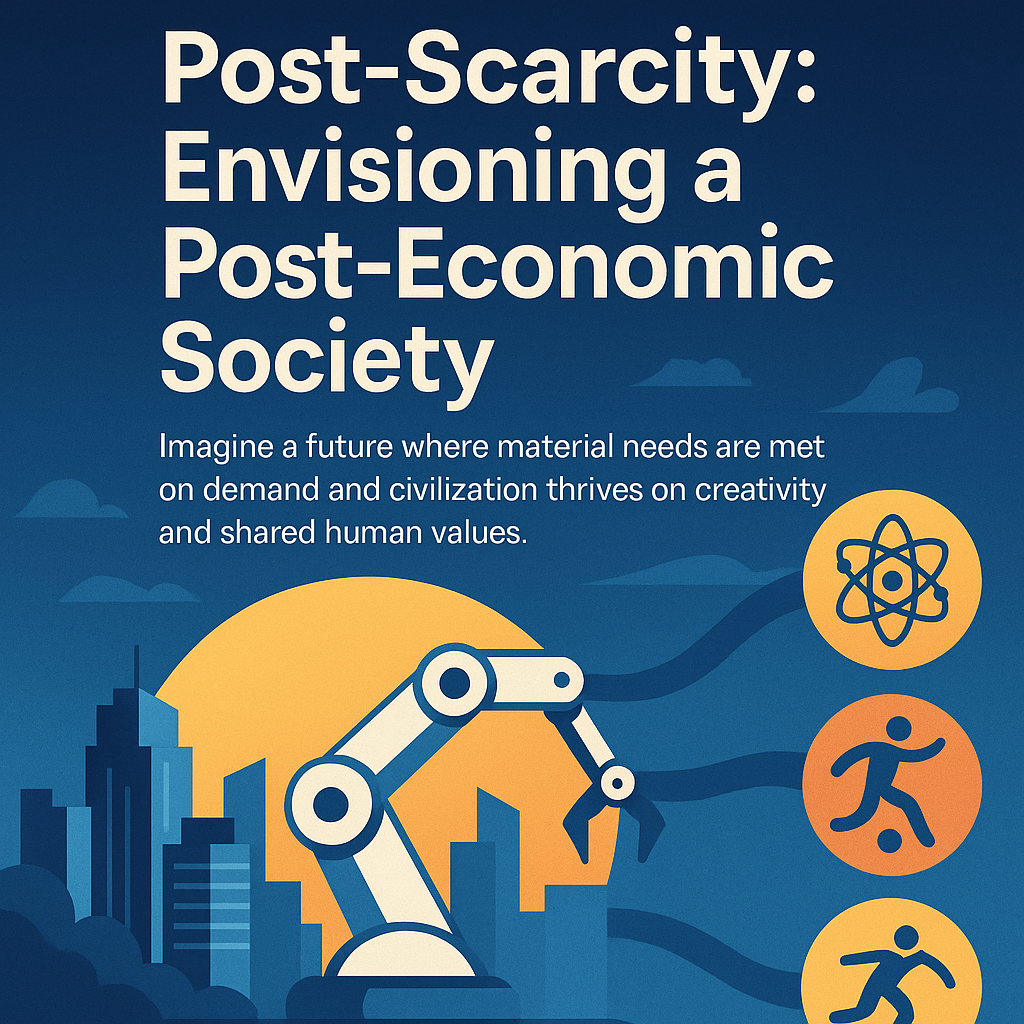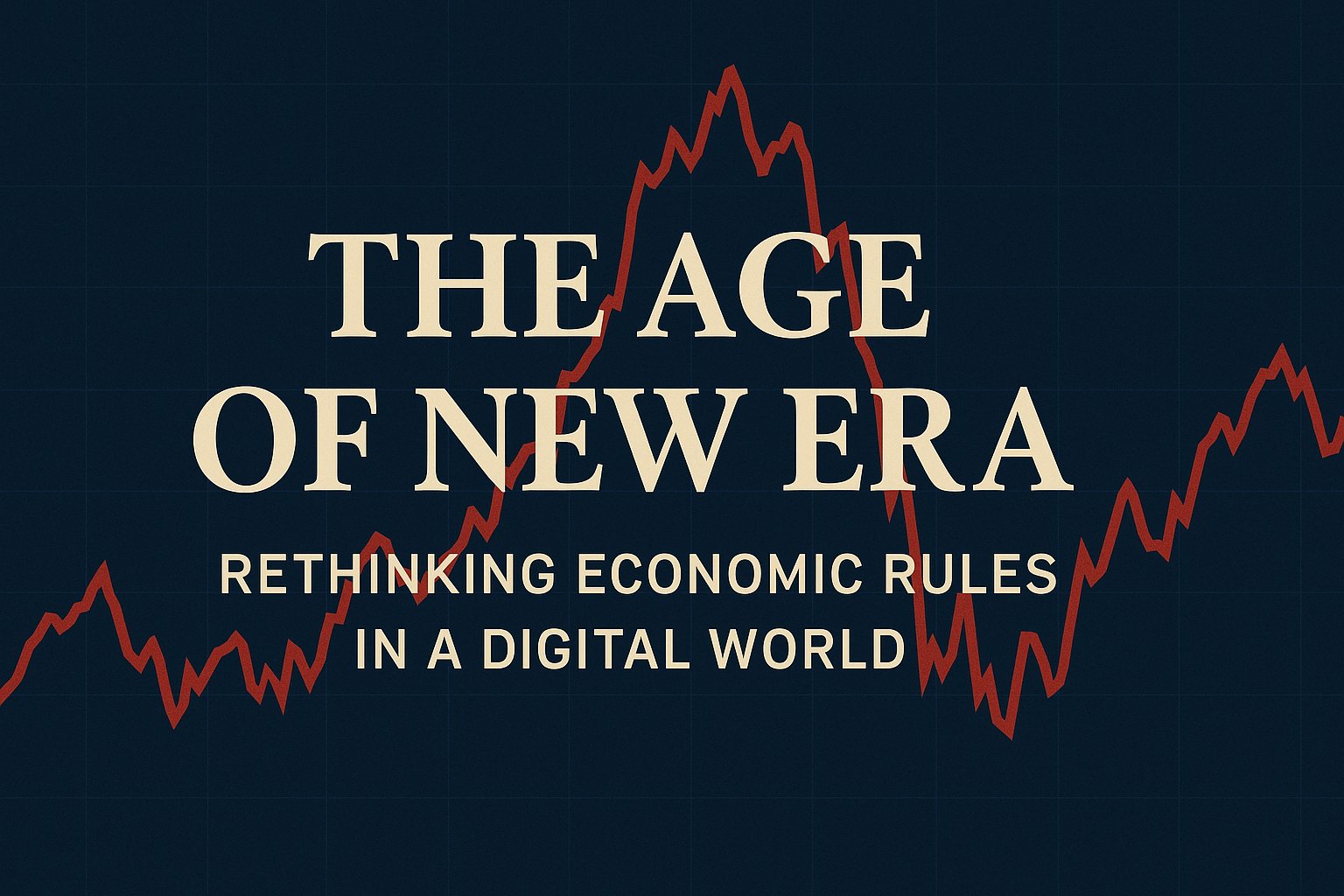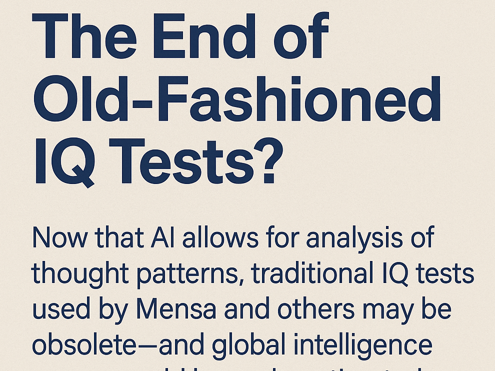Post-Scarcity: Envisioning a Post-Economic Society
Imagine a future where material needs are met on demand and civilization thrives on creativity and shared human values.
The Promise of a Post-Scarcity World
Technological advancements, from advanced robotics and 3D printing to seamless digital production, are paving the way to a post-scarcity society. In this future, goods can be produced on demand with minimal waste and energy—reshaping not only how we create and consume, but also redefining the very concept of scarcity.
In a mature civilization, production on demand means that resources are used only when needed, ensuring efficiency and environmental sustainability. Material abundance and the elimination of wasteful overproduction could radically transform our lives, ushering in an era where economic pressures give way to meaningful pursuits.
From Economy to Society: A New Measure of Progress
As material scarcity is solved, the relentless chase for economic growth may eventually become obsolete. Instead, civilization might measure success by human fulfillment rather than GDP. In this vision:
- Art: Creativity in everyday life—from cooking and music to handcrafted arts—will embody our shared heritage and cultural evolution.
- Science: Innovation will be pursued for its intrinsic value, solving challenges sustainably and enhancing quality of life without the pressure of constant competition.
- Sport: Physical activity and competition will continue to thrive as expressions of human vitality and communal bonding.
In this post-economic society, work will not be defined solely by labor for profit. Instead, human pursuits will center on the intrinsic joy of creative expression, scientific discovery, and athletic excellence—a society built on shared values and collective well-being.
Long-Term Projections: 5, 10, and 100 Years into the Future
Short-term (5 years):
Early experiments in production on demand could emerge in niche communities. Pilot projects may showcase localized post-scarcity models where technology meets direct human need, hinting at the broader possibility of resource-efficient living.
Mid-term (10 years):
As technology matures and spreads, regions that embrace sustainable production on demand may begin to influence broader economic policies. We might see a blend of traditional and new economic models, with governments experimenting with alternative metrics to measure societal progress.
Long-term (100 years):
Looking a century ahead, the cumulative effects of a post-scarcity society could lead to a world where the traditional economy has largely receded. Human fulfillment would be driven by art, science, and sport. In this vision, the focus shifts from accumulating wealth to nurturing creativity, community, and sustainable living—a harmonious civilization where material needs are effortlessly met.
Advantages and Challenges of a Post-SCARCITY, Post-Economic Society
Advantages
- Sustainable Production: On-demand manufacturing minimizes waste and reduces the environmental footprint.
- Enhanced Quality of Life: With basic material needs effortlessly met, societies can focus on cultural and intellectual pursuits.
- New Metrics of Progress: Shifting from GDP-based success to measures of human well-being, creativity, and social fulfillment can create a more equitable society.
- Collective Innovation: A system that values collective progress could foster innovation that is sustainable and aligned with long-term human goals.
- Rebalanced Global Power: As resource-based scarcity fades, geopolitical tensions may ease, replacing conflict with cooperation in solving global challenges.
Challenges
- Transitional Disruptions: Shifting away from conventional economic systems could create short-term instability as societies and governments adjust.
- Redefining Incentives: Without traditional profit-driven incentives, there is a risk that innovation may slow, necessitating new motivators for creative and scientific breakthroughs.
- Cultural Resistance: Deeply ingrained values around competition and material success might hinder the adoption of a modest, post-economic lifestyle.
- Measurement and Evaluation: Developing new metrics for societal progress beyond GDP will require rethinking our fundamental economic and social indicators.
- Institutional Reform: Radical changes in governance and infrastructure may be needed to support a post-scarcity society, which can be met with resistance from established systems.
Conclusion: A Vision for the Future
The journey toward a post-scarcity, post-economic society is both a bold thought experiment and a profound possibility. As technology makes production on demand a reality, humanity may choose to live more modestly, focusing on the creative and cultural pursuits that truly enrich our lives. In this future, the traditional economy recedes into the background, replaced by a civilization driven by art, science, and sport.
While the path is fraught with challenges—from transitional disruptions to cultural resistance—the vision is clear: a future in which the well-being of every individual matters more than material accumulation. This is the spark of the Age of New Era—a call to reimagine our civilization, where abundance is defined not by economic output but by the richness of human experience.





Comments
No comments yet. Be the first to comment!